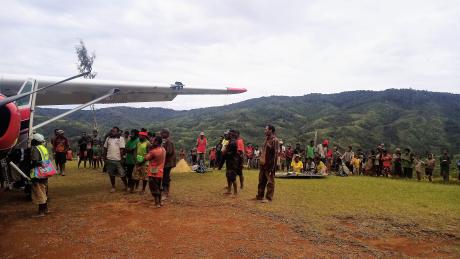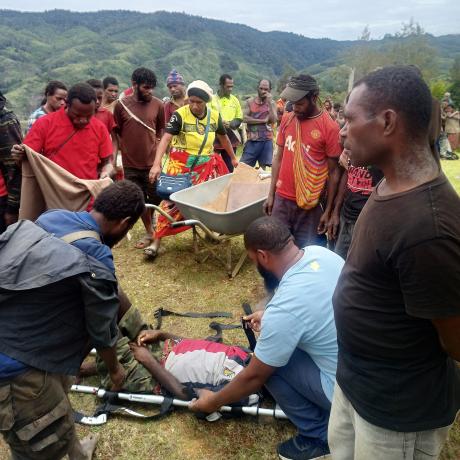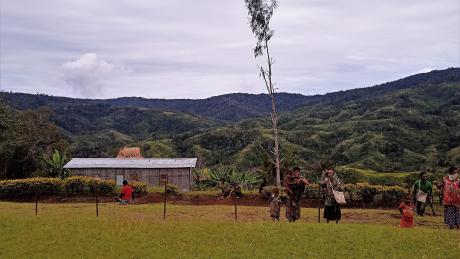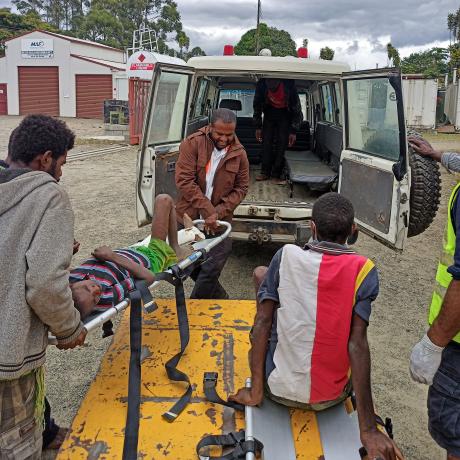
Ralf Hartmann, a Swiss volunteer with MAF Papua New Guinea, and normally busy in the office assisting our IT department, had the chance to join a medevac flight for three patients with broken legs from Sengapi to Mt Hagen
One sleepy Saturday morning, I was jolted out of my book by a knock on the door. The neighbour was asking if I would like to observe a medevac of three patients with broken legs. I immediately agreed and 30 minutes later I was at the Mt Hagen airport helping the ground crew move seats out of the plane so that two stretchers could be fixed to the floor of the cabin.
Before take-off, the pilot asked if I still wanted to come as he was expecting heavy turbulence. I decided to go, nevertheless. Shortly afterward, I buckled myself into the aircraft at the co-pilot’s seat and we were waiting for clearance from the control tower to take off for Sengapi.

Soon, the pilot received the take-off clearance from the tower controller, and we were airborne, heading to Sengapi. Fortunately, there was almost no turbulence during the 20-minute flight, and upon landing, we were greeted by about a hundred people and three injured patients.
For more than 50 years, MAF has been helping [the village] by transporting cargo and injured people. Without this lifeline, many of the people would have suffered permanent damage or even died if they could not be treated in a hospital.
One of the patients was a child of about five years, carried by his father. The second one, a young teenager, was carried on a make-shift stretcher and obviously in a lot of pain. The third patient, a middle-aged man, was carried to the plane in a wheelbarrow.

While this man was transferred to the MAF stretcher and onto the plane, the teenager's fracture had to be stabilised with the help of two branches. As the boy was stabilised and also transferred onto the plane, I came into contact with many kinds of people. They told me what life is like in a village without road access and how grateful they are to MAF. For more than 50 years, MAF has been helping them by transporting cargo and injured people. Without this possibility, many people would suffer permanent damage or even die if they could not be treated in a hospital. After the patients were loaded and the pilot was still busy with paperwork, they showed me what infrastructure they had in their village. They were especially proud of their church and their own school.

When all the administrative work was done, we could start our flight back to Mt Hagen. Thankfully, there was hardly any turbulence, and we soon landed safely at the Kagamuga airfield.
Now it was time to take the patients from the plane to the waiting ambulance. We transported the three patients to the ambulance using one of the cargo trolleys. The ambulance, a normal Toyota Land Cruiser, did not have any in-built stretchers like our ambulances in Switzerland, so we had to move the people from the stretcher to the seat benches. After another 15 minutes, the patients were on their way to the Kudjip Nazarene hospital to receive professional medical care.
